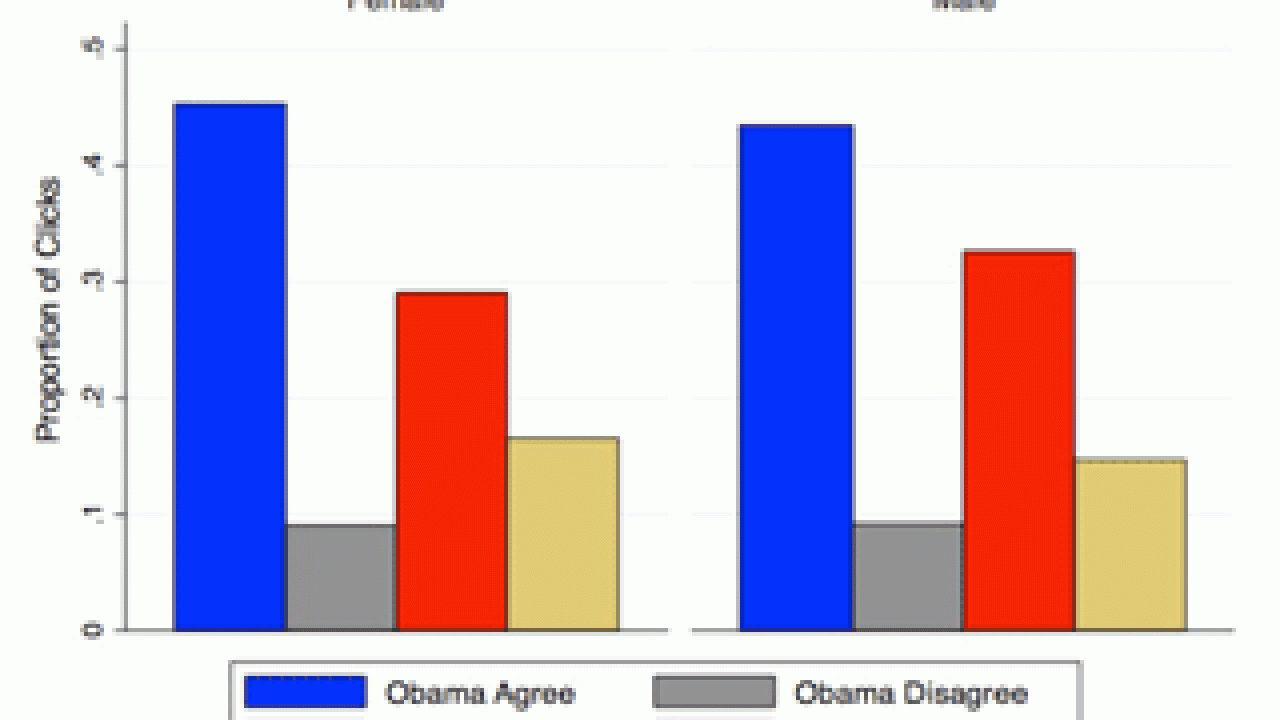By a margin of more than two to one, college students nationwide said President Obama won Monday night’s final presidential debate, according to a smartphone polling application co-designed at the University of California, Davis.
The app allows, for the first time, live reaction to a debate on a large scale. During the final debate, more than 2,300 students from 40 states used the app, clicking “agree,” “disagree,” “spin” or “dodge” as Obama and Republican challenger Mitt Romney squared off on foreign policy.
Participants gave Obama his third-strongest “agree” spike of the night when he said: “Well, Governor, we also have fewer horses and bayonets…” in response to Republican challenger Mitt Romney’s criticisms about the military strength of the United States.
Obama received the most “spin” clicks during his discussion about his trips to the Middle East, mentioning his visit to the Holocaust museum in Yad Vashem.
Romney received the most “dodge” clicks of the night when he dismissed a question about Israel’s potential to bomb Iran as “hypothetical.”
“This has been a tremendous experience to see how students react when watching the debate live,” said Amber Boydstun, an assistant professor of political science at UC Davis who co-designed the app with colleagues at UC Davis; the University of Maryland, College Park; and the University of Arkansas, Little Rock. She cautioned that while immediate reactions can be fleeting, researchers learned a lot from instant reactions.
“Most exciting will be looking at the data in more detail, identifying the specific types of debate cues that vitalize or alienate different types of voters. These findings will inform our understanding of political behavior, with implications for candidate debate strategies as well,” she said.
Thousands of students from more than 270 classes in about 75 different colleges and universities across the country participated in field tests of the app during the vice presidential debate and three presidential debates.
At UC Davis, students used the debate viewing app at their own locations in apartments and dormitories, but also at debate viewing parties organized for both the first debate Oct. 3 and Monday’s final debate. Similar gatherings were held at colleges throughout the country.
Following the final debate, 8 percent of participants said they had changed their minds about whom to vote for, with about two-thirds switching to Obama. Slightly more than a third shifted to Romney. Most of those who shifted their votes had been undecided at the beginning of the debate.
More than half of the participants said they were Democrats and about a third said they were Republicans. Nearly 60 percent said they intended to vote for Obama. More than half of all participants were male.
When broken down by ethnicity, 65 percent of participants were white, 12 percent were Hispanic, 9 percent Asian, and 9 percent African American. Five percent described themselves as “other.”
A slide show breaking down response by state, race, gender and other factors is available at the React Labs Educate website: http://reactlabseducate.wordpress.com.
ReactLabs Educate is a collaborative research project designed to track people's real-time responses to the presidential debates.
Philip Resnik, a professor of linguistics and computer science at the University of Maryland and Boydstun's collaborator, has developed a startup company to commercialize the underlying technology.
Download a chart about how partisanship affected the student reaction and another about how race affected the student reaction to the debate on Oct. 22.
Media Resources
Karen Nikos-Rose, Research news (emphasis: arts, humanities and social sciences), 530-219-5472, kmnikos@ucdavis.edu
